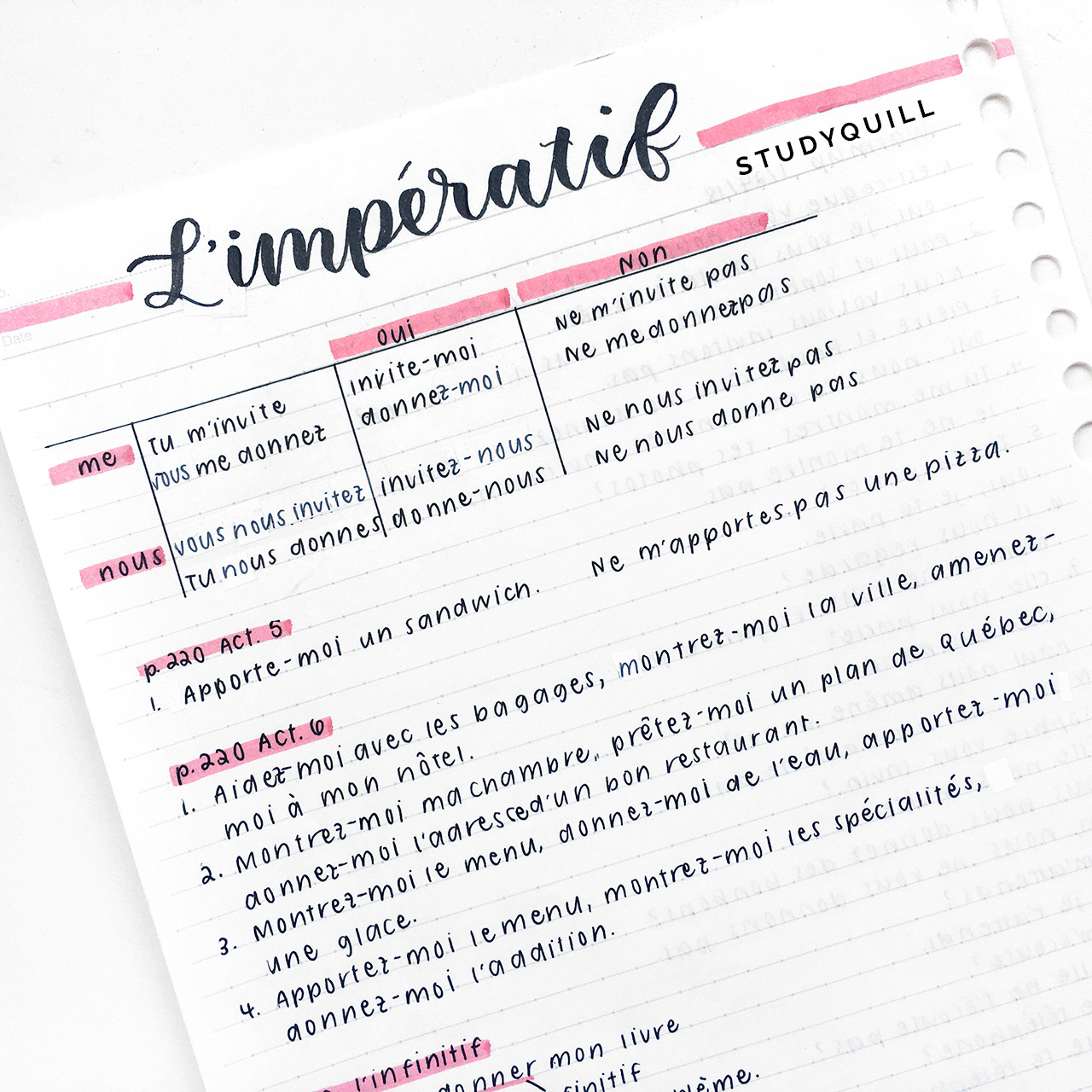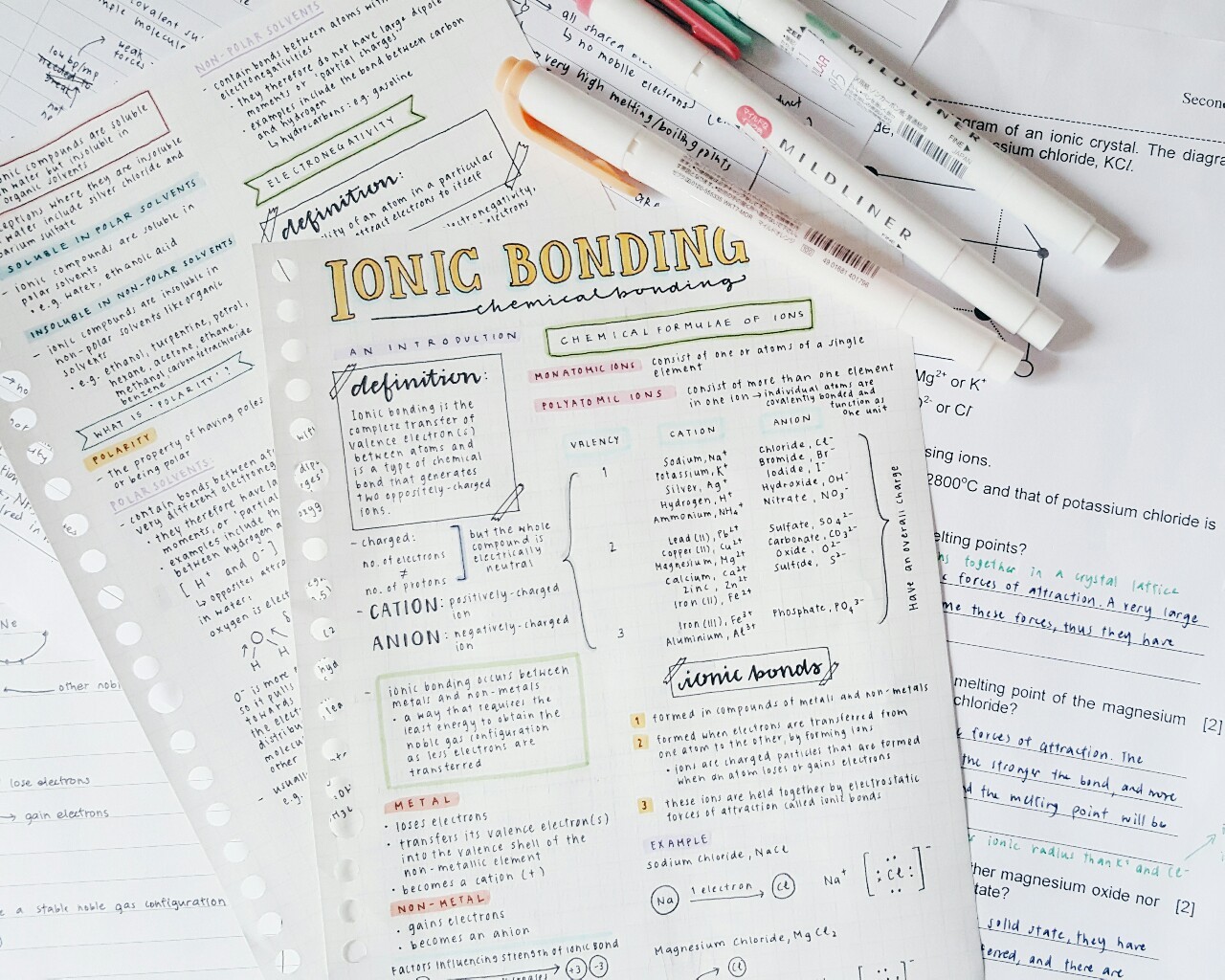
The Most Powerful Way To Stop Forgetting What You Study
To stop forgetting what you study you should firstly identify why you forget. Do you lack the intention to remember the content? Do you fall into negative thinking patterns about what you are learning? Or do you forget the content from disuse? Then you should gain an understanding of the curve of forgetting and implement spaced repetition, the most powerful way to stop forgetting what you study, into your study routine as well as active recall study methods.
Why You Forget What You Study
1. You Are Only Working Your Short Term Memory
The reason why most students forget what they study is that the information goes into their short term memory and not their long term. You can remember the facts for a few hours and maybe a few days after initially learning it but without further review it drops out of your memory. Unfortunately this is the case for the vast majority of students. 🙁
2. You Lack The Intention To Remember What You Learn
Another reason why you might forget what you study is because you lack the intention to remember it. You might dislike the class or the teacher or think that the information that you are learning is absolutely irrelevant to you. Falling into negative thinking patterns like this can hinder your ability to remember as you think that you can’t do it before you even really try.
3. Mental Overcrowding
You might also forget what you study from mental overcrowding. If you are learning or study too much at one time it inhibits your ability to remember. Always focus on one thing and a time, master it, then move on to the next thing. Mental overcrowding also encompasses multi-tasking while studying. For example, watching youtube in the background, listening to music with lyrics or chatting with friends etc. That is the reason why you should study in a quiet space.
4. Forget Overtime From Disuse
The last reason why you forget what you study links back to the short term and long term memory idea but is more specifically that you forget from disuse. Another reason why repetition of review is important to remember your study content.
How To Stop Forgetting What You Study

The answer is spaced repetition…
Hermann Ebbinghaus & The Curve Of Forgetting
In 1885, Hermann Ebbinghaus performed an experiment in which he memorised lists of meaningless syllables in the form of consonant ,vowel, consonant. None of the letter combinations could be real words in English. In this way it was a true test of his memory as he had never encountered the made up words before.
After memorising his list of nonsense words he tested himself periodically to figure out how many words he remembered at various points of time. In short, he found out that his memory of these words had rapidly declined. From this experiment he discovered the basic processes of learning and forgetting. And within that was his was his most significant discovery – the curve of forgetting. You might be familiar with this theory already.
The Hermann Ebbinghaus Memory Theory
The Hermann Ebbinghaus memory theory is a mathematical formula which describes the rate at which we forget information after initially learning it.
The discovery is defined by the equation: R = e^(-t/s)
This is what each variable in the equation means:
- R = how readily you can recall something
- s = the strength of your memory
- t = the amount of time that has passed
- e = Euler’s number
It makes more sense in graph form…
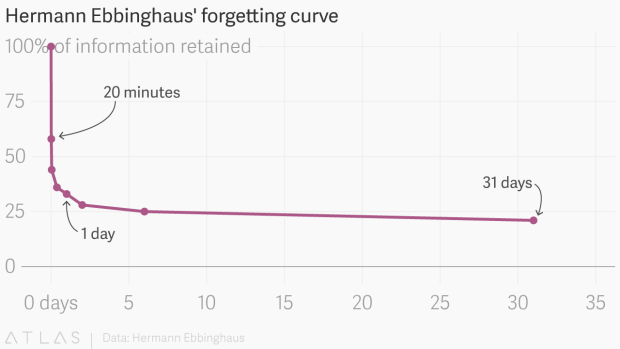
As you can see in this graph, the initial gradient is extremely steep, going straight down! It represents how much information you have forgotten in the first 10 to 20 minutes after learning new information. In about 20 minutes you retain roughly 60% of what you just learned. In a day, you retain just over 25% of what you learned 24 hours ago. The gradient then levels off, meaning that any information that you did retain will stick with you for many days afterwards. From this graph you can see why you always forget what you study!
The Solution Is Spaced Repetition
To make the gradient of R more gradual it is vital to repeat and review information at certain intervals over time to increase the strength of your memory. There needs to be space between repetitions. You can’t just revise new content 20 times in one hour and then overcome the curve.
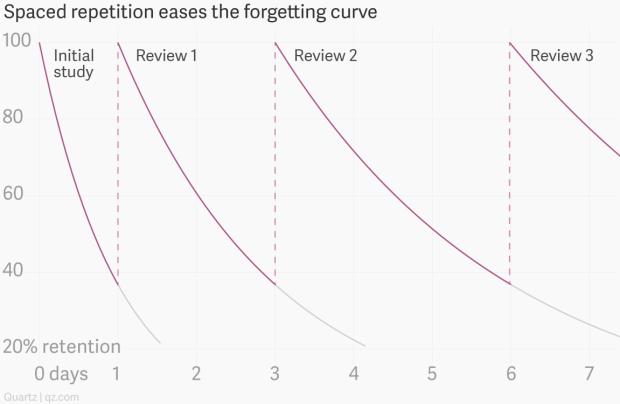
To improve your memory and ultimately forget less you need to constantly be revising new and old topics. But this does not mean you go back and find your old work and start looking at it everyday. Some things obviously need more revision than other things and this can be difficult to keep track of. With so much information being expected of you to learn at school or university it can become difficult to remember what content to revise and when to revise the content. This is why I have created a printable to help you overcome the curve of forgetting.
To use the theory of spaced repetition with your studies as a way to stop forgetting what you just studied, I suggest recording a sub-topic with it’s date and revising it an hour after learning it, a day after learning it, a week after learning it, two weeks after learning it, a month after learning it, 3 months after learning it and 6 months after learning it.
If you use a curve of forgetting printable it becomes easier to track what needs to be studied and what doesn’t and it follows these time intervals that are supported by spaced repetition research.
This Is The Curve Of Forgetting Printable That Can Help You Track How Often You Need To Revise Based On Spaced Repetition Intervals
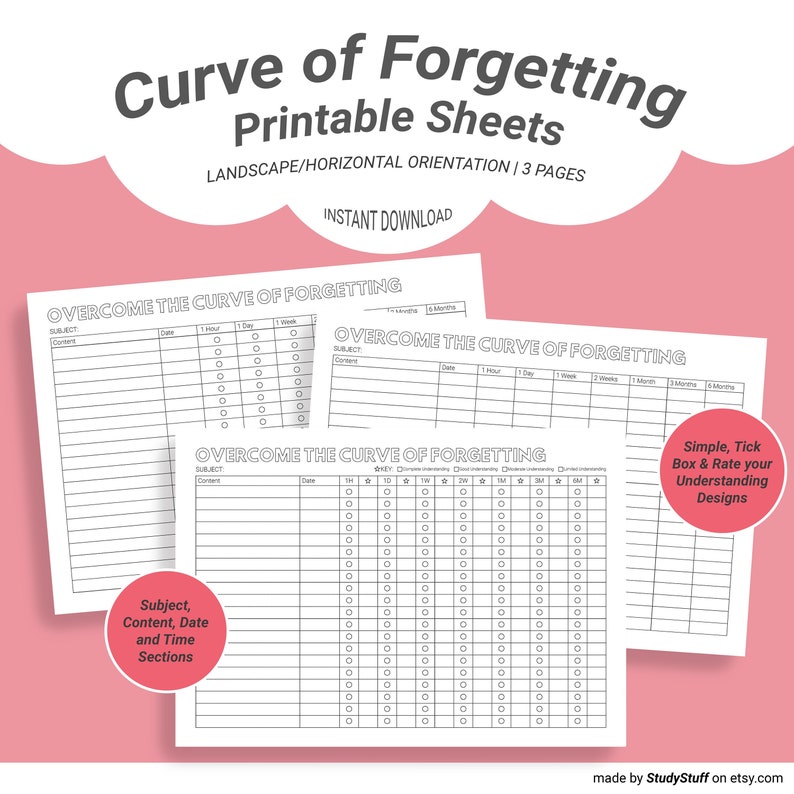
Additionally Use Active Recall Based Study Techniques
It’s not all good to just start applying spaced repetition to your study routine and then expect to be able to remember everything that you studied. What if your problem is that your study methods just aren’t effective at all?
Active recall is an efficient method of learning, in which a student actively stimulates their memory during the learning process. This is contrasted with passive learning where information is processed passively e.g. through reading a textbook. The power of using active recall study methods is that you are working your brain much harder, enabling you to retain much more information and thus need less repetitions of the information.
These Are Some Examples Of Active Study Methods
- Flashcards With The Leitner Method
- Create Mind-Maps From Memory
- Do Past Papers Under Exam Conditions
- Create Quizzes
- ‘Brain Dump’ Method Where You Write Down Everything You Remember Onto A Separate Piece Of Paper After Reading A Page Of A Textbook
Before You Go!
Check Out The Digital Student Planner

If you take notes using your iPad, you need to know these 12 iPad note taking tips! They will make …
There are many different note taking methods that can work well for language learning. To take effective notes for language …
To take pretty notes you need to firstly choose a consistent colour scheme. Next you should draw an eye catching …
To take notes on a PDF on an iPad you need to use a note taking or PDF reading app …
To get motivated to do school work one should set SMART goals, work in a motivating environment, break large projects …
To take aesthetic notes one needs to choose a consistent colour scheme, use eye catching titles and headers, invest in …


